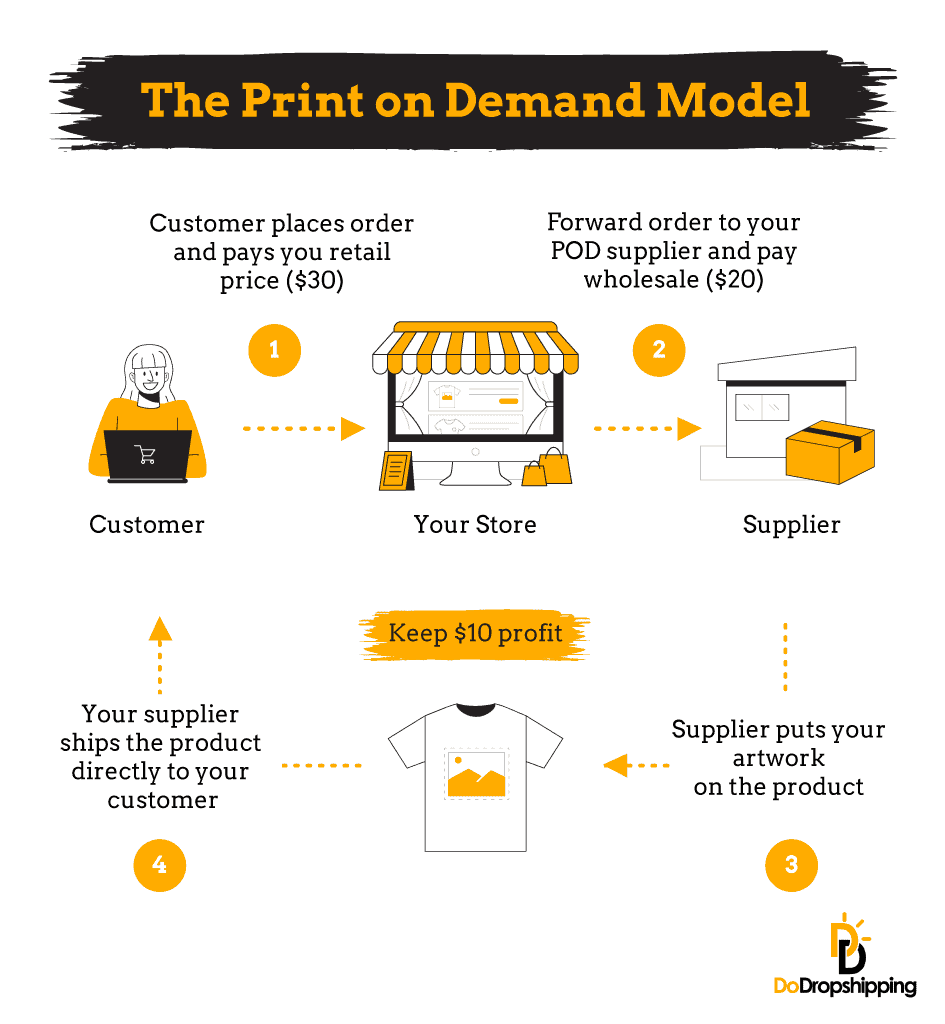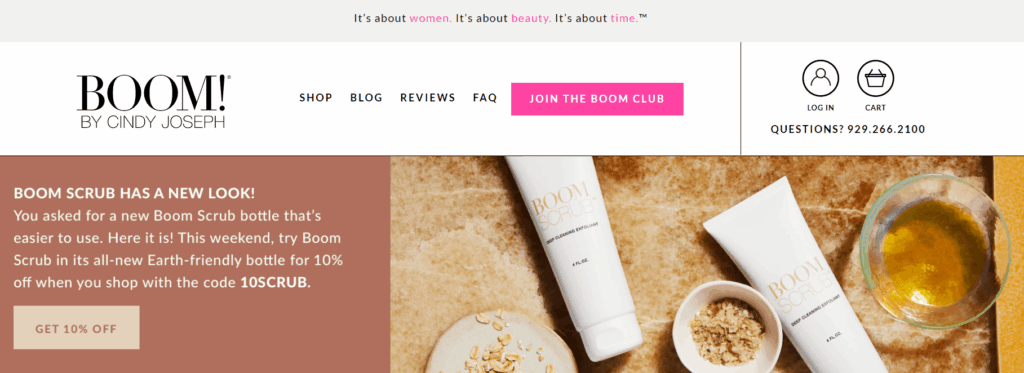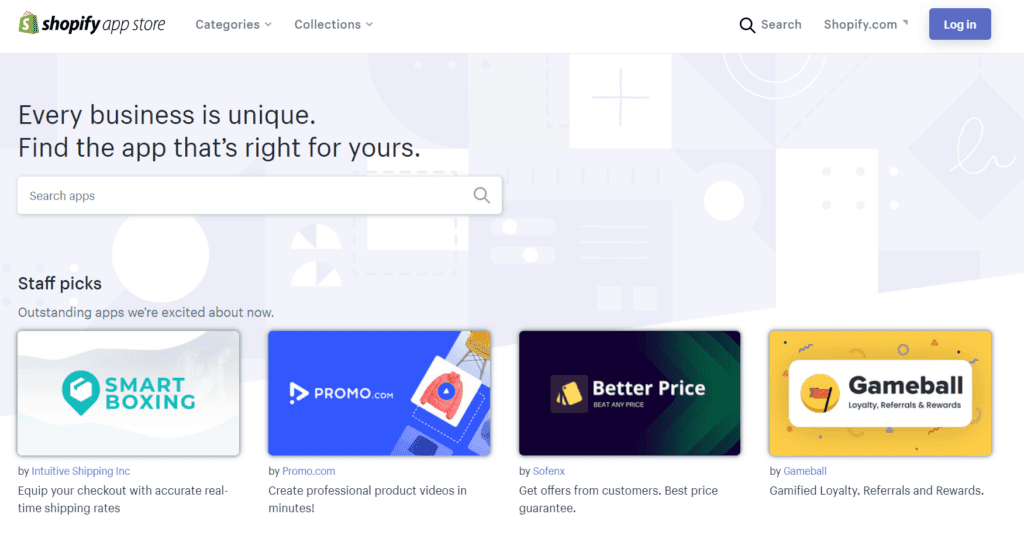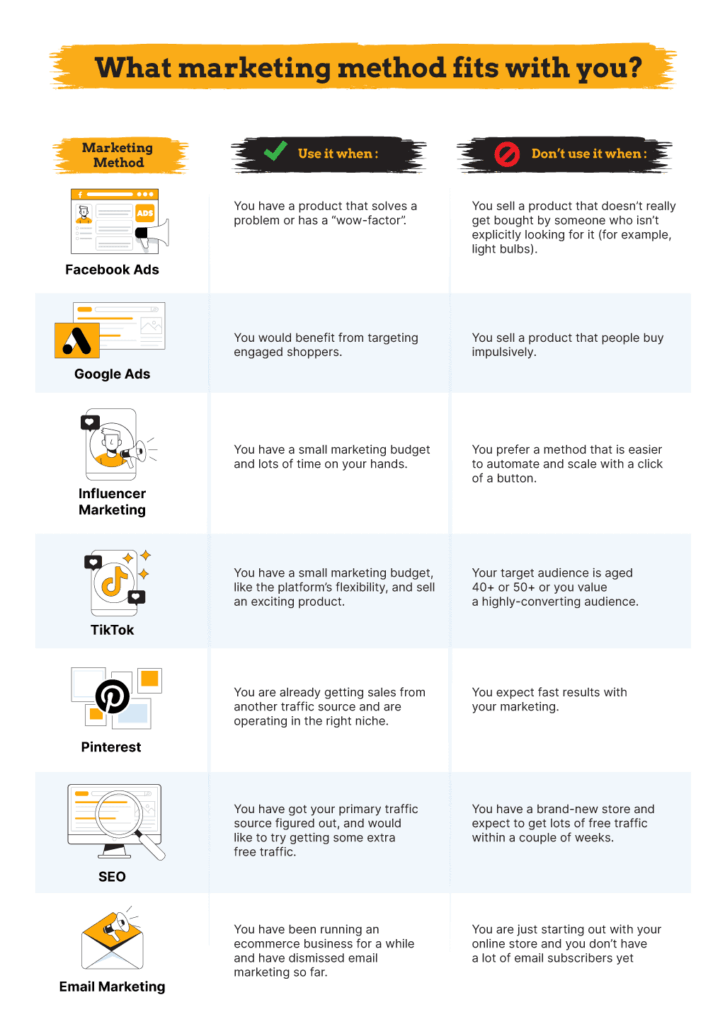Have you ever had an idea for a product that you think people would buy? Maybe a lifestyle brand or online pet store that you could call your own?
If so, starting a Shopify store is a great way to take your thoughts into action.
But, let’s face it, there are a lot of ecommerce websites out there right now, which means you will have stiff competition.
With so much choice, what will convince people to pick your store over another? The answer is uniqueness and a strong brand identity, which can be difficult to achieve but is essential if your business succeeds long term.
However, once it’s up and running, you will be surprised by how much fun it is to run your own Shopify store.
This ultimate guide will walk you through everything you need to know about starting a Shopify store from scratch. Let’s dive in!

How do you start a Shopify store? (A 9-step walkthrough)
If you were looking for an easy-to-follow, step-by-step walkthrough of starting a Shopify store, you are in the right place!
Below, we have put together a comprehensive guide that will take you through every stage of starting your Shopify business.
We’ve also included some extra tips along the way to help you make your store a success.
Here are the nine steps of starting a Shopify store in 2023:
- Pick a Shopify plan
- Come up with your product idea
- Choose a fulfillment method
- Find a supplier
- Define your ideal target audience
- Design and brand your Shopify store
- Install the right Shopify apps
- Set up your payment gateways
- Choose a marketing method that fits you and start advertising!
Without further ado, let’s get started!
1. Pick a Shopify plan
The first step to starting a Shopify store is to sign up for a Shopify account.
During your sign-up process, you will have to pick a Shopify plan.
Shopify has three main pricing plans: Basic ($39 per month), Shopify ($105 per month), and Advanced ($399 per month).

But don't let those higher prices scare you. For someone just starting a Shopify store, the Basic plan is more than enough!
The Basic plan offers pretty much the same features as the Shopify plan. The main difference is that you will have to pay a bit more transaction fees for your customers' transactions.
And if you ever feel like you need more features or lower transaction fees, you can always upgrade to a Shopify or Advanced plan later!
If you don't have a Shopify store yet, sign up by clicking this link to get a free 3-day trial + pay $1/month for the first 3 months.

2. Come up with your product idea
The next step is getting a clear view of what product(s) you would like to sell. Once you have a clear understanding of your product, you will be able to build your whole Shopify store around it!
Try to find a product idea that you’re passionate about. This will help give you the energy or drive to succeed.
However, it's also important to find a product with the characteristics of a winning product:

If you don’t know where to start, try reading these product example articles to get your creative juices flowing:
- 14 Great Medium-Ticket Dropshipping Product Examples in 2023
- The 13 Safest Product Examples for Dropshipping in 2023
- 16 Winning Dropshipping Product Examples
And here are some more questions that might help you come up with a product idea:
- What do you like?
- What are your hobbies?
- What do you wish existed?
- What problems do you want to solve?
- What do you know a lot about?
A product research tool may be the perfect solution if you struggle to find product ideas. These tools collect many popular products, making it easier to find a winning product!

Let's take a brief look at three of the best product research tools:
| Research tool | Pricing | Read Review | Try Out? |
| Sell The Trend | $39 per month | Sell The Trend Review | Free 7-day trial |
| Niche Scraper | $49.95 per month (or $13 per month with our discount code) | Niche Scraper Review | Use code ‘DoDropshipping' for 75% off (register here) |
| Thieve.co | $15 or $49 per month | Thieve.co Review | Click here |
Last but not least, you will have to choose between a niche store, general store, or one-product store.
Again, for a quick overview, check out this table:
| Type | Short description | Pros | Cons |
| General store | A Shopify store that sells products in various categories. | Take advantage of product trends. | It can be difficult to market. |
| Reach more people. | It's challenging to build a loyal customer base. | ||
| Niche store | A Shopify store that is focused on a single niche (e.g., fitness or hiking) | You can focus on a specific target audience. | It can be hard to pick a niche and stick to it. |
| You can start social media theme pages. | Less freedom. | ||
| Upselling is easier. | |||
| One-product store | A Shopify store that sells just a single product. | Dedicate your focus to a single product. | It's crucial to sell a winning product. |
| It's easier to optimize marketing campaigns. | No possibility of upselling or cross-selling. | ||
| Improve your conversion rate. |
3. Choose a fulfillment method
Now, you must decide how to fulfill orders. The strategy you will be using is called a ‘fulfillment method.'
Here’s a table showing a quick overview of the three fulfillment methods that we recommend, including the pros and cons of each one:
| Fulfillment method | Short description | Pros | Cons |
| Dropshipping/print on demand | Sell (self-designed) products without keeping them in your inventory. | Quickly test various products. | Less control of the fulfillment process. |
| Little start-up costs. | Long shipping times. | ||
| Low-risk. | A lot of competition. | ||
| Third-party fulfillment | Buy your own inventory and let a third-party fulfill your orders. | More control over your inventory and shipping. | More risk (will your product sell?). |
| Shorter shipping times. | Requires a higher upfront investment. | ||
| You can buy your inventory in bulk, which is cheaper. | |||
| In-house fulfillment | Manage the fulfillment of your products yourself. | Full control over the fulfillment process. | It can require more time or money. |
| Great opportunity to use custom packaging. | Distracts you from other tasks. | ||
| Learn more about the whole fulfillment process of an online store. | You are responsible for everything. |
Let’s take a look at each one in more detail.
Dropshipping/print on demand
Dropshipping is the most popular and most straightforward method of running a Shopify store. With dropshipping, you never have to worry about inventory or shipping!
How does it work?
When a customer orders a product from your store, you simply contact your supplier, and they will ship the product directly to your customer’s door. Dropshipping is perfect for entrepreneurs looking to set up their first Shopify store with limited upfront investment.

A fulfillment method that closely resembles dropshipping is print on demand.
Print on demand is a type of dropshipping where you sell custom-printed products like t-shirts, mugs, phone cases, etc. It is perfect for entrepreneurs looking to start a Shopify store and sell a personally customized product with no upfront investment or risk.

If you can’t choose between dropshipping and print on demand, take a look at this infographic:

Third-party fulfillment
Third-party fulfillment is a type of fulfillment where you ship your products to a third-party company, and they will store, pack, and ship your products for you.
The main advantage of using third-party fulfillment compared to dropshipping is having more control over your inventory and shipping. And if you choose a third-party fulfillment warehouse located in your customer's country, your shipping times will significantly improve.
You will also be able to purchase your products in bulk, which is cheaper than buying them one by one.
However, the downside is that more risk is involved and requires a more considerable upfront investment (because you have to buy your own inventory).
In-house fulfillment
If you want complete control over the fulfillment process of your dropshipping store, then the in-house fulfillment model may be the choice for you.

By choosing the in-house fulfillment model for your ecommerce store, you will have to make sure that your store has enough inventory and that once you get an order, those products will be packed and shipped to your customer.
As the name of in-house fulfillment implies, you may literally do this by keeping an inventory in your own house. This gives you complete control over your fulfillment process, but it does take a lot of time, which can distract you from other important tasks related to your Shopify store.
4. Find a supplier
When running a Shopify store, you need a supplier to source your products from.
The fulfillment method you have chosen will partly determine which supplier fits you. Some suppliers focus on dropshippers or in-house fulfillment stores, while others only work with print on demand stores.
When searching for a supplier for your Shopify store, it's important to pay attention to some details. Here is how you can spot a good supplier:

Got it?
Let's look at some of the best suppliers out there now!
Best suppliers for dropshipping, in-house, or third-party fulfillment stores
To help you find a supplier for your Shopify store, we have created an overview table below featuring some of the best ones out there.
If you click on the supplier's name, a new tab will open, leading to their website. Meanwhile, the ‘Read Review' link will open a new tab where you can read our review of that supplier, including things like their pros and cons!
| Supplier | Primary Location | Pricing | Read Review |
| Spocket | US/EU | $25 to $99 per month | Spocket Review |
| AliExpress | China | Free | AliExpress Review |
| CJdropshipping | China | Free | CJdropshipping Review |
| SaleHoo | US | $67 per year or one-time $127 | SaleHoo Review |
| Syncee | Worldwide | $29 to $99 per month | Syncee Review |
| Avasam | UK | £20 / £50 / £100 / £150 per month + VAT | Avasam Review |
| Alibaba | China | Free | Alibaba Review |
| BigBuy | Europe | €69 to €99 per month + €90 registration | BigBuy Review |
If you are especially interested in suppliers that are located in a specific region, you will be able to find them here:
- Best suppliers in Canada
- Best suppliers in the United States
- Best suppliers in Europe
- Best suppliers in the United Kingdom
- Best suppliers in China
- Best suppliers in Australia
- Best suppliers in New Zealand
Best suppliers for print on demand stores
As mentioned before, print on demand stores need a particular type of supplier.
That's because print on demand suppliers are able and willing to customize their products based on your designs.
Here are some of our top picks if you are looking for print on demand suppliers:
| Supplier | Primary Location | Pricing | Read Review |
| Printful | Worldwide | Click here | Printful Review |
| Printify | Worldwide | $0 to $29 per month | Printify Review |
| Inkthreadable | UK | Free | Inkthreadable Review |
| Art of Where | Canada | Free | Art of Where Review |
| Ogo | Australia | Free | Ogo Review |
For more print on demand suppliers, check out our article here with the 15 best print on demand companies!
5. Define your ideal target audience
The next step is to define your target audience.
Your target audience is the group of people you want to sell your products to. They often have similar interests, hobbies, ages, or gender.

It's important to find your ideal dropshipping audience because those are the people with the highest chance of purchasing your products!
And this isn't just our opinion. For instance, Philip Kotler, an American marketing expert, even said the following:
There is only one winning strategy. It is to carefully define the target market and direct a superior offering to that target market.
Philip Kotler
The most common methods to define your target audience are developing a buyer persona, analyzing your product's benefits, or simply testing different audiences to find the best-performing one.
A buyer persona is a fictional character that represents your ideal customer. By creating a buyer persona, you will be able to figure out who your target audience is and what their needs are:

For a detailed step-by-step guide on defining your ideal target audience, check out this article!
6. Design and brand your Shopify store
Designing and branding your Shopify store is one of the most important steps in starting a Shopify store. It also requires the most amount of work.
A lot of this will depend on your product idea, so you can start thinking about it as soon as you have it.
Your branding and design should reflect the personality and values of your brand. This will allow you to better connect with your target audience.
One of the first things to do is think of a name for your store.
When doing so, it's important to pick a unique, short, and memorable name related to your niche.
You could also use a name generator if you're looking for inspiration. For instance, check out Namelix or Shopify's Business Name Generator!
Tip: Check out this article for ten tips on choosing the perfect name for your Shopify store!
Once you are ready for the actual design work, one of the first things you will have to do is pick a Shopify theme.
Your Shopify theme is the foundation of your store’s design. It determines the overall look and feel of your store.

It’s important to pick a Shopify theme that is well-designed and easy to use. You can browse through Shopify's theme store to find a theme that suits your needs. Alternatively, you can check out the following articles for some great recommendations:
- 10 Best Shopify Dropshipping Themes in 2023
- 27 Best Shopify Themes for Your One-Product Store
- 10 Best Free Shopify Themes for Your Online Store in 2023
Next, take your time to get some awesome product images, craft an irresistible product description, and design a nice logo.
While building your store, it's a good idea to take some inspiration from some of the best players in the industry. You will be able to find some great inspiration here:
- 8 Product Description Examples for Ecommerce (+ 5 Tips)
- 14 Awesome Shopify Homepage Examples
- 23 Most Successful Shopify Dropshipping Store Examples

Last but not least, don't forget about branding!
Branding a Shopify store allows you to create a business for the long term. It does great things for your visitors' trust and increases the percentage of customers returning to your store.

If you would like to give the same ‘branded' vibes to your store's visitors, check out seven tips on how to brand your store here!
Last but not least, every Shopify store should create its ‘standard store pages,' like the privacy policy and shipping policy.
If you want to know more about these standard pages and how to create them, this article will surely help!
7. Install the right Shopify apps
When working on the design and branding of your Shopify store, you will notice that you can create a great-looking store without using any apps.
However, installing several critical Shopify apps allows you to add awesome functionalities to your store.

Some Shopify apps help you with email marketing, some aim to increase your conversion rate, and others help you with accounting or managing orders.
You don't need to install many apps, just install the ones you think will be useful for your store.
To get started, here are some essential Shopify apps that we recommend for every Shopify store:
- Loox (Reviews app)
- HelpCenter (FAQs page app)
- AfterShip (Order tracking page app)
- Cartloop (SMS marketing app)
- Plug in SEO (SEO app)
For more great Shopify app recommendations, you can also take a look at this article!
8. Set up your payment gateways

Great work! You're almost ready to welcome the first customers to your Shopify store.
The only thing left to make your Shopify store sales-ready is setting up your payment gateways and the shipping and taxes settings.
A payment gateway is a service that allows you to accept payments online. When a customer wants to make a purchase on your Shopify store, you need to make sure you have a payment gateway set up so they can complete the payment.
There are multiple payment gateways out there that you could use for your Shopify store. When picking one, it's important to consider the following:
- If your store's business model is accepted (some payment gateways don't support dropshipping stores).
- Whether it works with the country and currency of your target audience.
- The transaction fees.
- The customer service.
The best payment gateways for your Shopify store
Wondering what the best payment gateway will be for your Shopify store? You will find it here!
| Payment gateway | Price rating | Read Review |
| Shopify Payments | Cheap | Shopify Payments Review |
| PayPal | Expensive | PayPal Review |
| Stripe | Average | Stripe Review |
| Amazon Pay | Expensive | Amazon Pay Review |
| Google Pay | Cheap | Google Pay Review |
| Apple Pay | Cheap | Apple Pay Review |
The best way to pick a payment gateway is by going through the following steps:
- Find out which countries you would like to sell to and the most popular payment methods in those countries.
- If possible, pick some of the more popular payment gateways like Shopify Payments or PayPal.
- If you have trouble with those, you can always try and test some of the smaller ones.
Note: Don't forget that accepting Bitcoin and other cryptos on your Shopify store is often possible. You can check out this article for more details.
And that's it! You are now ready to start selling on your brand new Shopify store.
Let's continue with the final and never-ending step, marketing!
9. Choose a marketing method that fits you and start advertising!

Once you’ve set up your Shopify storefront, you’re ready to start marketing.
It’s important to remember that marketing is an ongoing process. It’s not something you do once, and everything falls into place. You need to be consistent and persistent.
That being said, there are many marketing strategies you can try. Again, the best ones depend on your goals and your Shopify store.
If you know your niche, the product you will be selling, and your target audience, you will find your best marketing method in this article!
However, if you are looking for a brief guideline of which marketing method fits you, check out the following infographic:

Summary
Before going over the last good-to-know information, here's a great summary of all the information that we've talked about above:

Why you should start a Shopify store in 2023
First of all, you should start an online store because online shopping is one of, if not the fastest-growing segments of the retail industry.
Just take a look at the growth of retail ecommerce sales worldwide:

You can see that the sales are snowballing. From 2020 to 2027, the global ecommerce market is even expected to grow at a compound annual growth rate of 14.7%!
But why should you start a Shopify store in particular?
Well, simply because Shopify is one of the best overall ecommerce platforms.

It is the third-largest retailer behind Amazon and eBay. Their premium product, Shopify Plus, is used by well-known corporations like Pepsi, Heinz, Tesla, and even celebrities like Lady Gaga.
Shopify is the best platform for your online store for the following seven reasons:
- It is straightforward to start a Shopify store as a beginner.
- It is affordable and provides value and scalability.
- It offers world-class customer support.
- It has the speed and security you need.
- It offers marketing tools and SEO.
- It is mobile-friendly.
- And lastly, it provides resources and apps for all types of online stores!
FAQs about starting a Shopify store in 2023
Here are some frequently asked questions about starting a Shopify store. We hope they will answer any last questions you may have:
How much does it cost to start a Shopify store?
The answer is that it depends. Shopify has three different monthly pricing plans, ranging from $39 to $399. You will also need to pay other costs, like your domain (+-$10) or business registration.
Over time, your costs will be expected to increase as you will need more advanced apps, a marketing budget, and a product testing budget. Click here to learn more about the funding you need to start a Shopify store.
How long does it take to start a Shopify store?
It takes about 15 minutes to sign up for a Shopify account and start setting up your store. However, it’s important to note that building a successful Shopify store takes much longer time, effort, and consistency.
Do I need to be a tech expert to start a Shopify store?
No, you don’t need to be a tech expert to start a Shopify store. The platform is designed for non-technical people, and it’s easy to use.
Is starting a Shopify store worth it?
Yes, starting a Shopify store is definitely worth it. Shopify is the leading ecommerce platform, and it’s easy to use. You can begin with Shopify's 3-day free trial and start your Shopify store in minutes.
Can I start a Shopify store for free?
You can start a Shopify for free using the 3-day free trial, but eventually, you will have to pay for things like the Shopify subscription and your store's domain.
Do you need a business license to sell on Shopify?
Shopify does not require you to have a business license. However, your country might require you to have a business license when starting an online Shopify store.
How do I determine the best retail price for my products?
You should determine your product's retail price based on a pricing strategy that considers all your expenses and calculates an optimal selling price as an output.
To learn more about creating a pricing strategy for your Shopify store, check out this article!
Conclusion
Now that you know how to start a Shopify store, it’s time to get started!
Starting a Shopify store can be a great way to start your own business and earn some extra income from home.
It’s not easy, but if you follow this guide, you’ll be well on your way.
We hope you found this guide helpful and wish you the best of luck with your Shopify store. If you have any questions, feel free to leave a comment below.
Happy selling!
Want to learn more about Shopify?
Ready to move your Shopify store to the next level? Check out the articles below:













